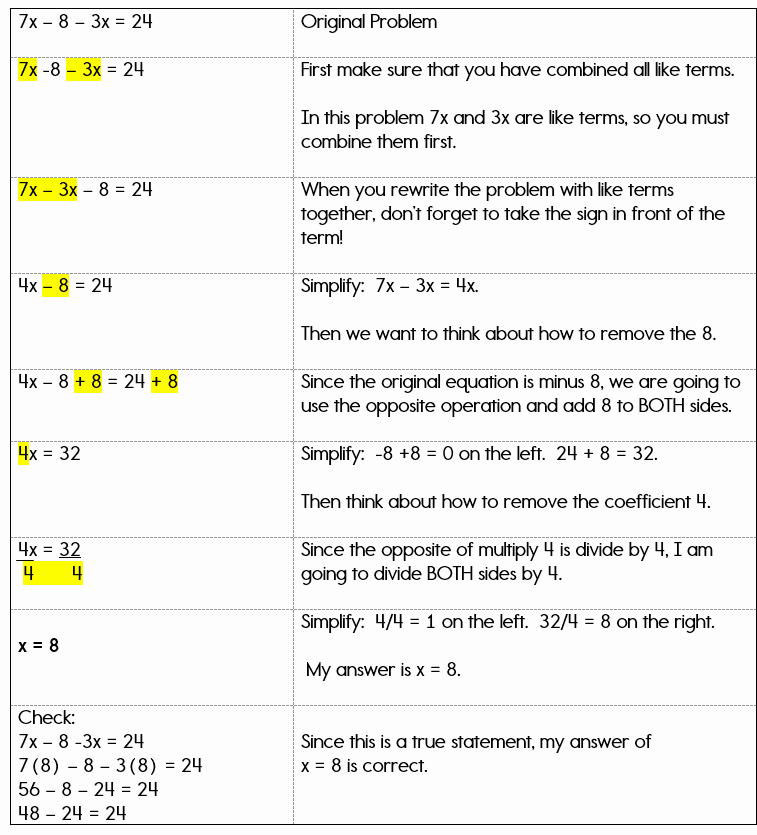5 Ways Combine Equations

Combining equations is a fundamental aspect of algebra and problem-solving in mathematics. It involves manipulating and solving systems of equations to find the values of unknown variables. There are several methods to combine equations, each suitable for different types of problems. Here, we’ll explore five ways to combine equations, along with examples to illustrate each method.
1. Substitution Method
The substitution method involves solving one equation for one variable and then substituting that expression into the other equation to solve for the other variable. This method is particularly useful when one of the equations is easily solvable for one variable.
Example:
Given the equations: [ x + y = 4 ] [ x - y = 2 ]
Solve the second equation for (x): [ x = y + 2 ]
Substitute (x) in the first equation: [ (y + 2) + y = 4 ] [ 2y + 2 = 4 ] [ 2y = 2 ] [ y = 1 ]
Then, substitute (y = 1) back into one of the original equations to find (x): [ x + 1 = 4 ] [ x = 3 ]
So, (x = 3) and (y = 1).
2. Elimination Method
The elimination method involves adding or subtracting the equations to eliminate one variable, allowing you to solve for the other variable. This method is useful when the coefficients of one of the variables in both equations are the same or can easily be made the same.
Example:
Given the equations: [ 2x + 3y = 12 ] [ 2x + 4y = 14 ]
Subtract the first equation from the second: [ (2x + 4y) - (2x + 3y) = 14 - 12 ] [ y = 2 ]
Then, substitute (y = 2) back into one of the original equations to find (x): [ 2x + 3(2) = 12 ] [ 2x + 6 = 12 ] [ 2x = 6 ] [ x = 3 ]
So, (x = 3) and (y = 2).
3. Graphical Method
The graphical method involves plotting the lines represented by the equations on a coordinate plane. The point of intersection represents the solution to the system of equations. This method is visually intuitive and can be useful for understanding the relationship between the equations, though it may not always provide exact solutions.
Example:
Given the equations: [ y = 2x - 1 ] [ y = -x + 3 ]
Plot both lines on a graph. The point where the two lines intersect is the solution. To find this point without graphing, set the two equations equal to each other since they both equal (y): [ 2x - 1 = -x + 3 ] [ 3x = 4 ] [ x = \frac{4}{3} ]
Then, substitute (x = \frac{4}{3}) into one of the equations to find (y): [ y = 2\left(\frac{4}{3}\right) - 1 ] [ y = \frac{8}{3} - 1 ] [ y = \frac{8}{3} - \frac{3}{3} ] [ y = \frac{5}{3} ]
So, (x = \frac{4}{3}) and (y = \frac{5}{3}).
4. Matrix Method
The matrix method involves representing the system of equations as a matrix equation and then solving for the variables using matrix operations. This method is powerful and can be used for systems of any size.
Example:
Given the equations: [ 2x + y = 6 ] [ x - 2y = -3 ]
Represent the system as a matrix equation: [ \begin{bmatrix} 2 & 1 \ 1 & -2 \ \end{bmatrix} \begin{bmatrix} x \ y \
\begin{bmatrix} 6 \ -3 \ \end{bmatrix} ]
To solve, find the inverse of the coefficient matrix and multiply both sides by this inverse: [ \begin{bmatrix} x \ y \
\begin{bmatrix} 2 & 1 \ 1 & -2 \ \end{bmatrix}^{-1} \begin{bmatrix} 6 \ -3 \ \end{bmatrix} ]
Calculating the inverse and performing the multiplication gives the solution for (x) and (y).
5. Cramer’s Rule
Cramer’s Rule is a method for solving systems of linear equations using determinants. It involves calculating the determinant of the coefficient matrix and the determinants of matrices formed by replacing one column of the coefficient matrix with the constant terms, then using these determinants to find the values of the variables.
Example:
Given the equations: [ 2x + y = 6 ] [ x - 2y = -3 ]
The determinant of the coefficient matrix (D) is: [ D = \begin{vmatrix} 2 & 1 \ 1 & -2 \ \end{vmatrix} = (2)(-2) - (1)(1) = -4 - 1 = -5 ]
To find (x), replace the (x) coefficients with the constants and calculate the determinant (D_x): [ D_x = \begin{vmatrix} 6 & 1 \ -3 & -2 \ \end{vmatrix} = (6)(-2) - (1)(-3) = -12 + 3 = -9 ]
Then, (x = \frac{D_x}{D} = \frac{-9}{-5} = \frac{9}{5}).
To find (y), replace the (y) coefficients with the constants and calculate the determinant (D_y): [ D_y = \begin{vmatrix} 2 & 6 \ 1 & -3 \ \end{vmatrix} = (2)(-3) - (6)(1) = -6 - 6 = -12 ]
Then, (y = \frac{D_y}{D} = \frac{-12}{-5} = \frac{12}{5}).
So, (x = \frac{9}{5}) and (y = \frac{12}{5}).
Each of these methods has its own advantages and is suited for different types of equations and systems. The choice of method often depends on the specific problem, personal preference, and the tools available.